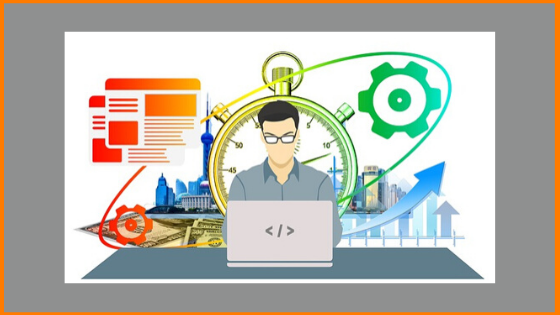While many organizations consider their maintenance department to be a cost centre, implementing a CMMS (Computerized Maintenance Management System) with preventive maintenance functionality allows for disciplined planning and scheduling practices. In time, this move can shift the maintenance department from a cost centre to a profit centre. If you want your equipments to function properly till the end, you need to maintain them and take care of them.
To avoid any equipment from malfunctioning and to predict the future timing of maintenance work, businesses have started installing preventive maintenance or predictive maintenance software. Not only does this bolster a conducive working environment, but it also lessens the workload on the staff. This being said, preventive maintenance software helps in improving productivity, facilitates growth in revenue, and moreover, plays a key role in the trimming of budget expenses.
GIn this article, we will talk about how Preventive Maintenance Software helps in improving the company’s efficiency. So, let’s get started.
Proper Management of Work Orders
Creating Detailed and Digestible Reports
Scheduling Routine Maintenance Work
Monitoring Inventory and Asset Management
Compliance With Safety and Regulatory Standards
Improvement in Productivity
Popular Preventive Maintenance Software Systems
Proper Management of Work Orders
Various tools present in any industry-grade preventive maintenance software help the facility managers in scheduling the order of maintenance work of assets, and as a result, help them record and track the completion of various tasks quickly.
Furthermore, this software setup helps the heads of a company to keep track of the history of maintenance activities along with helping them in assigning tasks to respective employees. They also provide templates for work orders so that the designers and engineers can curate work orders to efficiently communicate information about tasks to other workers.
Eventually, this upgrade in the workflow breeds improved communication and efficient internal management of workers. Nowadays, almost any preventive maintenance software provides role or tittle-based authorization, because of which only authorized personnel can mark a task as complete.
Creating Detailed and Digestible Reports
Businesses require reports of maintenance activities, which provide them with knowledge of the timing of these activities, how well they have been executed, and their corresponding completion time. Preventive maintenance comes forth with various styles in which a user can create detailed reports that are digestible and easily understandable. This will help in boosting productivity and the impact of preventive maintenance work being carried out to avoid any failure or breakdown.
Concerned managers can also input some key details in it, such as warranty details and information related to purchase. This particular feature of preventive maintenance software enables companies to assess the maintenance of equipment against its warranty. If a piece of equipment is under warranty period, the engineers and maintenance staff are notified right away. This is pivotal in the proper tackling of real-time maintenance procedures.
Scheduling Routine Maintenance Work
Equipment and machinery often come with information about periodic intervals after which they are required to be serviced. This is to be done on a routine basis and includes indispensable tasks like the replacement of parts, repair work, inspections, oiling, and more.
By keeping track of all these activities, a preventive maintenance system brings transparency to the maintenance workflow. This ensures that all the above tasks are executed within the given timeline in order to keep the equipment or assets well maintained and at par with industry standards.
The users can also input commands in preventive maintenance software to automatically schedule maintenance at marked intervals. The maintenance software is also designed to rank maintenance schedules as per an arbitrary or predefined priority or protocol for maintenance. This reduces the possibility of human error and boosts consistency.
Monitoring Inventory and Asset Management
Inventory is often maintained just above the minimum required level in order to keep costs at the lowest. The new-age preventive maintenance system provides you with data and analysis of the current condition of machinery and its maintenance cycle. Such updates tell the managers about how often the consumables and other inputs are being used. Eventually, this saves the business from unexpected wastage of stocks and proper management.
Various maintenance software offer features that involve continuous monitoring of asset performance – a utility that allows the user to treat them via the apt methodology. Another useful feature that such software provides is tracking the rate of depreciation of individual assets, which can be complex if quantified manually.
Compliance With Safety and Regulatory Standards
Preventive maintenance software not only helps you with asset management but also in complying with safety standards and regulations, thereby keeping your facility safe for your employees to work in. It does this by keeping track of the location of all the heavy and sensitive equipment to ensure a safe layout of your facility and thus, reducing the chances of damages or accidents.
Also, it records the maintenance of such apparatus equipment for auditing so that if any equipment or machine fails, you will not have to go through a large pile of files to get proof of regular maintenance records. It is also beneficial for the employees, as it constantly tracks health and safety-related data. Furthermore, it reduces the amount of paperwork required for all daily conducted activities.
Popular Preventive Maintenance Software Systems

Different companies use different preventive maintenance software, some of the most popular ones that are used and help in keeping the infrastructure up to date are:
- Limble CMMS
- MaintainX
- Upkeep
- Asset Panda
- Mapcon
- Fiix
- eMaint
Conclusion
The features and tools offered by the preventive maintenance system enable the companies to be able to compete well against other players in the industry by assisting them in keeping their infrastructure up to date and well maintained. Preventive maintenance software help businesses to minimize mechanical failures or downtime, enhance efficiency, and improve the lifespan of the equipment. With these software programs, one is able to understand situational needs and can identify the crucial assets that are key in the daily working of the business.
FAQs
What is Preventive Maintenance Software?
Preventive maintenance software is software that deals with productivity but also help maintain it in the future through its predictive ability to forecast future maintenance needs.
What are the top Preventive Maintenance Software?
- Limble CMMS
- MaintainX
- Upkeep
- Asset Panda
- Mapcon
- Fiix
- eMaint
What are the 4 types of Preventive Maintenance?
- Periodic Maintenance
- Meter-Based Maintenance
- Predictive Maintenance
- Prescriptive Maintenance

















